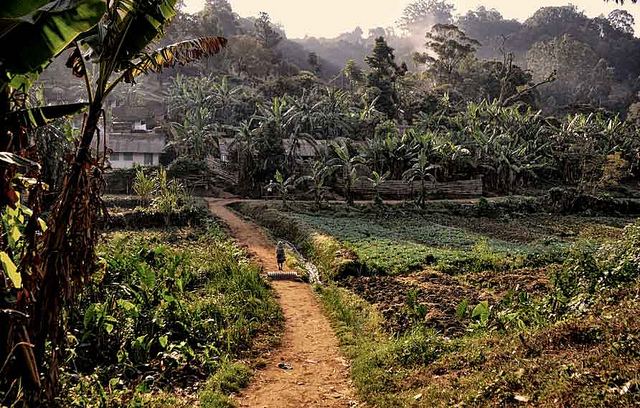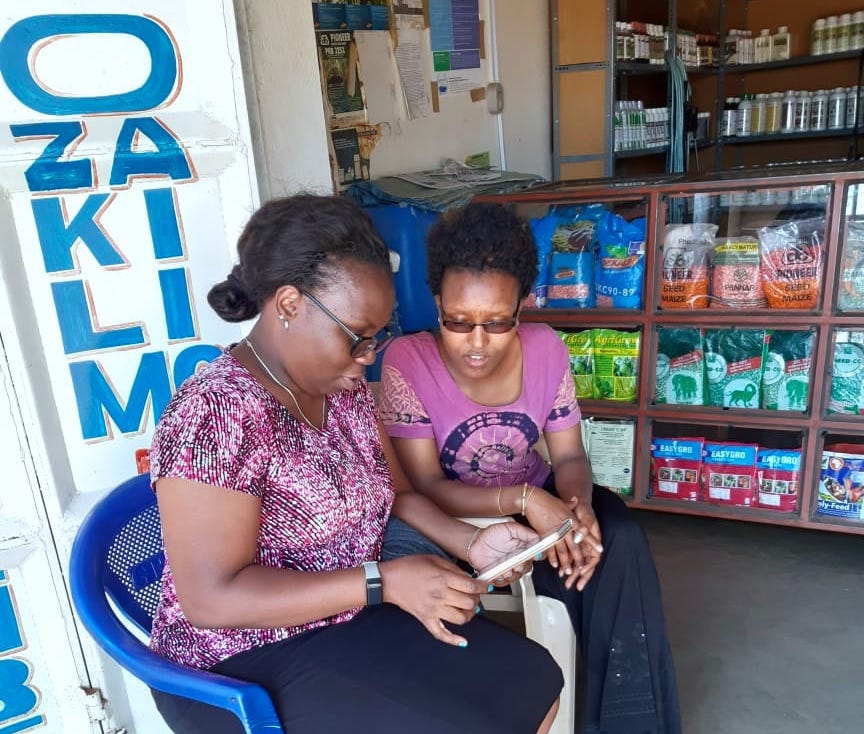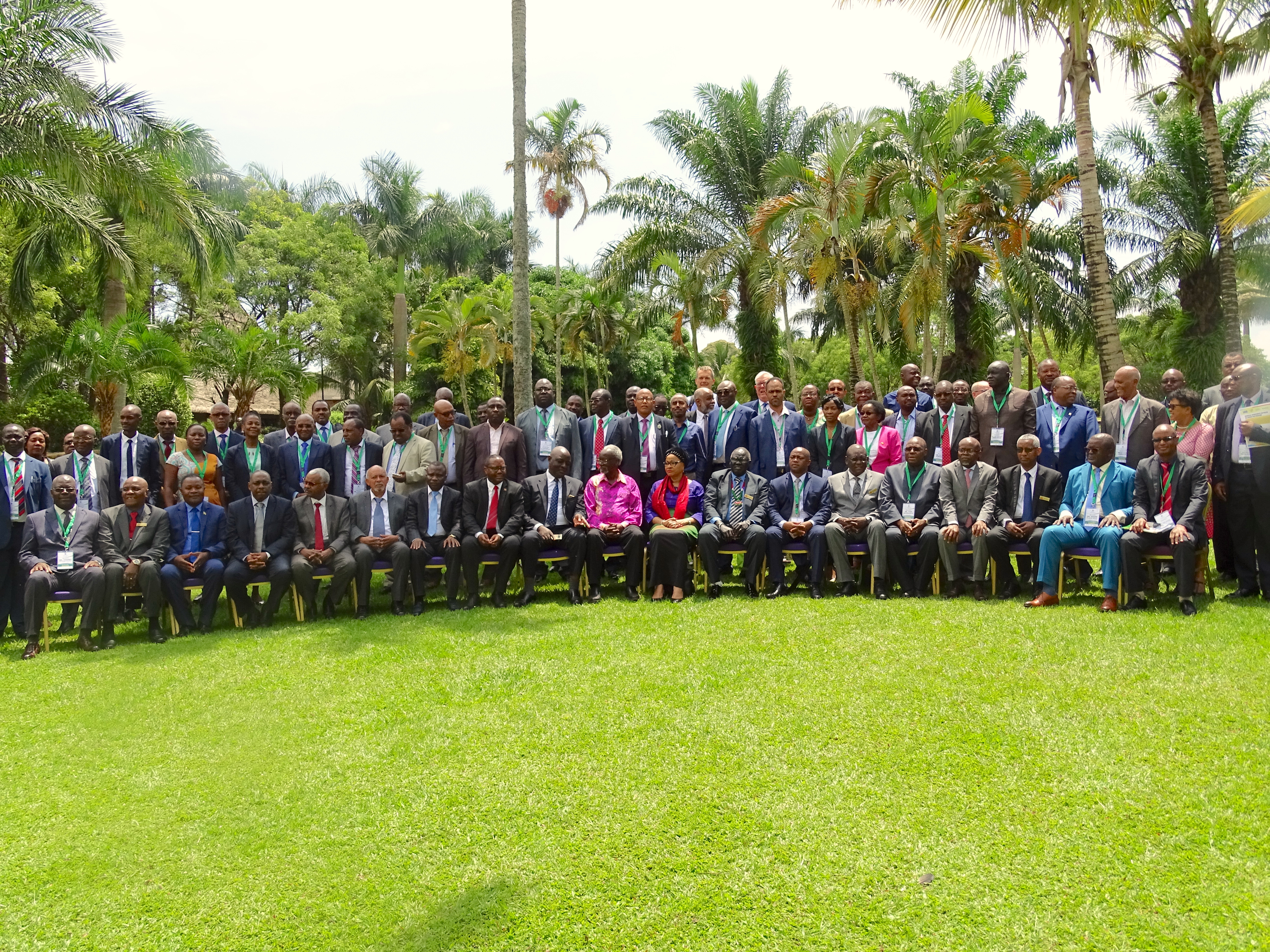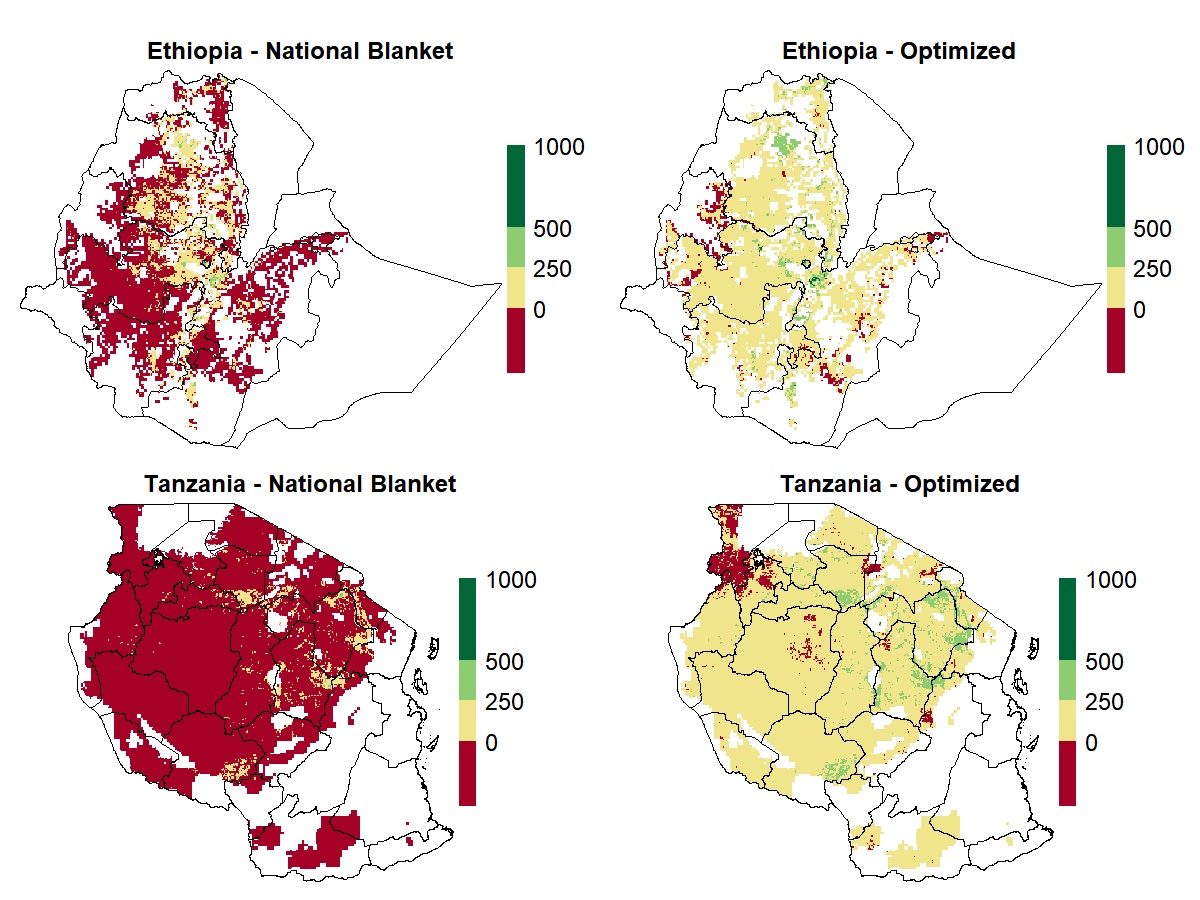Farmland distributions are rapidly evolving in many parts of sub-Saharan Africa, as data from the World Bank’s Tanzanian Living Standards Measurement Study-Integrated Surveys in Agriculture (LSMS-ISA) shows. Between 2009 and 2013, farms under 5 hectares have increased in absolute numbers – from 5.4 to 6.1 million – as smallholdings became increasingly fragmented due to demographic and land inheritance patterns. But farms greater than 5 hectares also grew in number, and their share in the rural landscape, in terms of land area, grew quickly. The share of total farmland held by “small” farms of less than 5 hectares declined from 62% to 56% over the period while the share of farmland under farms of 10 or more hectares grew by 6%. So, what are the implications of such rapid changes in farm structure and concentration of land under larger farms?
CIMMYT spatial economist Jordan Chamberlin is using household survey data in innovative ways to reveal how changing patterns of land access and farm size distributions are influencing farmers’ livelihoods. He is investigating whether medium- and large-scale farms generate benefits for nearby smallholder farmers. In a case study in Tanzania, Chamberlin and his colleague, T.S. Jayne, estimated how rural incomes are affected by land concentration measures, such as the Gini coefficient, after controlling for other household and geographical factors, including market access, population density, and rainfall.

Another important finding was the lack of evidence for positive impacts of farmland concentration when such concentration was measured as the share of land in farms of 10 or more hectares. The intuitive explanation of this result is that the larger the farm, the less likely it is to generate benefits for surrounding smallholders. This may be because medium-scale farms, relative to larger commercial farming enterprises, are more likely to employ labor from surrounding households, and may also provide services such as mechanized traction.
More research is needed to identify these spillover mechanisms, and to understand the conditions under which larger farms generate positive impacts for smaller neighbors. As the farmland landscape is evolving quickly in sub-Saharan Africa, understanding these mechanisms could be instrumental to drive more inclusive rural development. Such research could help to add nuance to the current debate in agricultural and land policy circles about whether the de facto expansion of medium-scale and larger farms are a boon or a threat to the smallholder majority within the region’s agrifood systems.
Jordan Chamberlin presented results from this study in a webinar on 6 November 2018 hosted by CGIAR’s Policies, Institutions, Markets Research Program.
Read more:
Does Farm Structure Matter? The Effects of Farmland Distribution Patterns on Rural Households Incomes in Tanzania in Food Policy.
This research was carried out in collaboration with T.S. Jayne, Michigan State University, with support from USAID’s Feed the Future Innovation Lab on Food Security Policy, the BMGF-funded Guiding Investments in Sustainable Agricultural Intensification in Africa (GISAIAA) initiative, the CGIAR Research Program on Policies, Institutions, and Markets (PIM).
Check out other recent publications by CIMMYT researchers below:
- BGGE: a new package for genomic-enabled prediction incorporating genotype × environment interaction models. 2018. Granato, I., Cuevas, J., Luna-Vazquez, F.J., Crossa, J., Montesinos-Lopez, O.A., Burgueño, J., Fritsche-Neto, R. In: G3: Genes, Genomes, Genetics v. 8, no. 9, p. 3039-3047.
- Carotenoid and tocochromanol profiles during kernel tevelopment make consumption of biofortified “fresh” maize an option to improve micronutrient nutrition. 2018. Cabrera-Soto, L., Pixley, K.V., Rosales-Nolasco, A., Galicia-Flores, L.A., Palacios-Rojas, N. In: Journal of Agricultural and Food Chemistry v. 66, no. 36, p. 9391–9398.
- Correction to: mapping adult plant stem rust resistance in barley accessions Hietpas-5 and GAW-79. 2018. Case, A.J., Bhavani, S., Macharia, G., Pretorius, Z.A., Coetzee, V., Kloppers, F.J., Tyagi, P., Brown-Guedira, G., Steffenson, B.J. In: Theoretical and Applied Genetics v.131, no. 10, p. 2267–2267.
- Registration of spring wheat germplasm ND 735 combining tan spot, Leaf, and stem rusts. 2018. Mergoum, M., Frohberg, R.C., Ali, S., Singh, P.K., Rasmussen, J.B., Miller, J.D. In: Crop Science v. 46, no. 2, p. 1003-1004.


 Nutrition, health and food security
Nutrition, health and food security 
